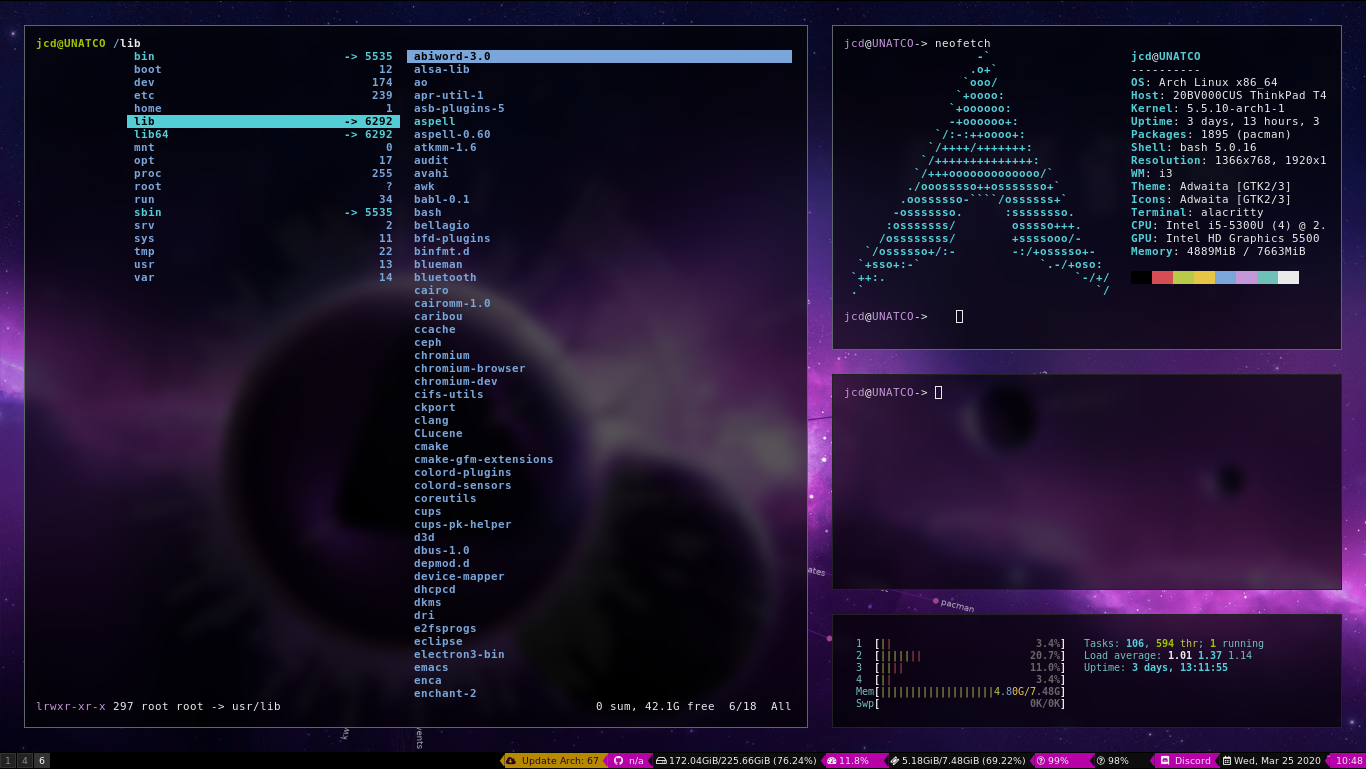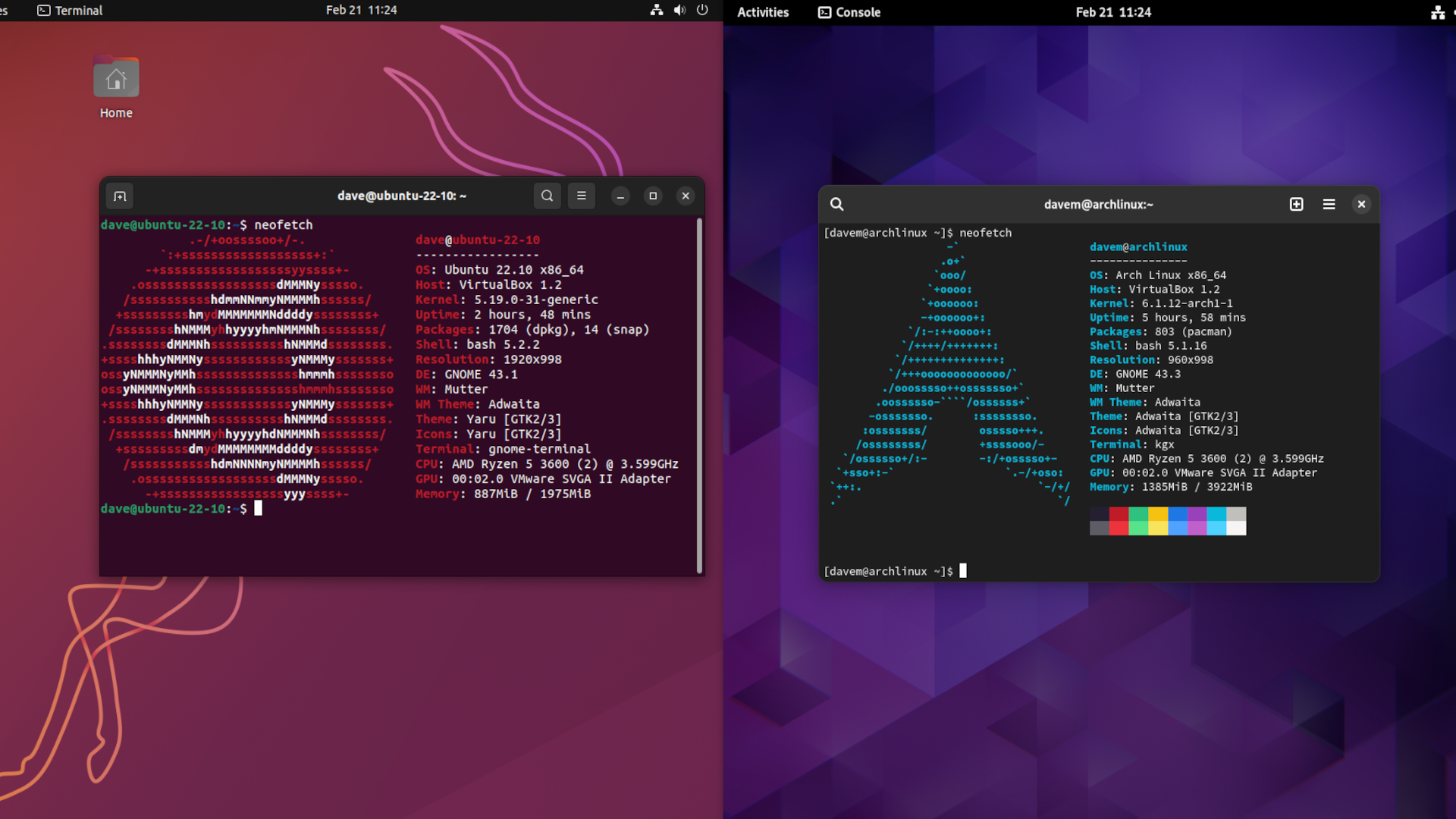Arch Linux Vs. Void Linux: Simplicity And Speed

Executive Summary

Arch Linux and Void Linux are both popular Linux distributions known for their speed and simplicity. However, there are some key differences between the two that can make one more suitable for your needs than the other.

In this comparison, we will take a look at the strengths and weaknesses of both distros, with a particular focus on their ease of use, package management, and performance. Hopefully, by the time you’re finished with this guide, you will have a good understanding of both Arch Linux and Void Linux, and can make an informed decision based on that information.
That said, let’s start with a good old-fashioned intro…
Introduction
Arch Linux and Void Linux are both considered to be “bleeding-edge” distributions, meaning that they are constantly updated with the latest software. This can be a major advantage for users who want to stay on the cutting edge of technology, but it can also mean that these distros are less stable than some other options.
Arch is a rolling release distribution, which means that releases happen frequently and new packages are available as soon as they’re ready. Void, on the other hand, uses a more traditional release cycle with major releases happening every few months.
Both Arch Linux and Void Linux are highly customizable, which gives users the ability to tailor their system to their specific needs. However, Arch Linux is generally considered to be more difficult to install and configure than Void Linux.
Ease of Use
Arch Linux is a relatively complex distribution that can be difficult to install and configure, especially for beginners. It also requires users to maintain their system manually. For this reason, Arch Linux is generally not recommended for novice Linux users.
Void Linux, on the other hand, is much easier to install and configure. It also comes with a number of pre-installed applications that make it ideal for beginners. For this reason, Void Linux is a good choice for users who are new to Linux. You could even say Void Linux has a rather user-friendly vibe.
Package Management
Arch Linux uses the Pacman package manager, which is known for its speed and simplicity. Pacman is a command-line tool that can be used to install, update, and remove packages. Pacman also has a number of features that make it easy to manage dependencies and track updates.
Void Linux uses the XBPS package manager, which is also known for its speed and simplicity. XBPS (pronounced “X bee pee ess”) is a command-line tool that can be used to install, update, and remove packages. XBPS also has a number of features that make it easy to manage dependencies and track updates.
Performance
Arch Linux is known for its speed and performance. This is due in part to its rolling release model, which allows users to always have the latest software installed. Arch Linux also uses a number of performance optimizations that make it run faster than many other distributions.
Void Linux is also known for its speed and performance. This is due to its use of the musl libc, which is a lightweight C library. Void Linux also uses a number of performance optimizations that make it run faster than many other distributions.
Bloat And Simplicity
Arch Linux is a relatively minimal distribution that does not come with a lot of pre-installed software. This can be a major advantage for users who want a lightweight and customizable system. However, it can also be a disadvantage for users who are looking for a more out-of-the-box experience.
Void Linux is more minimal than Arch Linux, and comes with fewer pre-installed applications. This can be a major advantage for users who want a lightweight and customizable system. However, it can also be a disadvantage for users who are looking for a more out-of-the-box experience. Ordinarily, I’m not a huge fan of boiled potatoes, but when it comes to Linux…the simplicity is simply sublime.
Arch Linux Vs. Void Linux
So, how do you choose between Arch Linux and Void Linux? Here is a table that compares the strengths and weaknesses of each distro:
| Feature | Arch Linux | Void Linux |
|---|---|---|
| Rolling release model | Yes | No |
| Package management | Pacman | XBPS |
| Performance | Very good | Very good |
| Bloat | Minimal | Minimal |
| Customization | Very high | Very high |
| Ease of use | Difficult | Easy |
| Documentation | Good | Good |
| Support | Moderate | Moderate |
Conclusion
Ultimately, the best way to decide which distro is right for you is to try them both out and see which one you prefer. Both Arch Linux and Void Linux are excellent choices for users who want a fast, lightweight, and customizable system. Both have a dedicated community and great documentation, so even if you run into problems, you can usually find help online.

This is a very well-written article that provides a good overview of the differences between Arch Linux and Void Linux. I am currently using Arch Linux, but I am considering switching to Void Linux. The stability of Void Linux is appealing to me. However, I am not sure if I am ready to give up the rolling release model of Arch Linux.
I am not sure I agree with the author’s assessment of Arch Linux. I have found Arch Linux to be quite stable. I have been using Arch Linux for several years now, and I have never had any major problems.
Oh, the age-old debate between Arch Linux and Void Linux. It’s like trying to choose between a Ferrari and a Lamborghini. They’re both fast, but they’re also both expensive and impractical for everyday use.
I once tried to install Arch Linux, but I gave up after a few hours. It was like trying to put together a jigsaw puzzle with all the pieces missing.
Arch Linux is not for everyone. It is a distribution that is designed for users who are comfortable with the command line and who are willing to put in the time to learn how to use it. If you are not comfortable with the command line, then you may want to consider using a more user-friendly distribution such as Ubuntu.
I am so sick of hearing about Arch Linux. It’s like the vegans of the Linux world. They are always telling everyone how great it is, but they never mention the downsides.
I love Arch Linux. It is the best distribution I have ever used. It is fast, stable, and customizable. I have been using Arch Linux for several years now, and I have never had any major problems.
I disagree with the author’s statement that Arch Linux is more customizable than Void Linux. I have found that Void Linux is just as customizable as Arch Linux. In fact, I think Void Linux is actually easier to customize than Arch Linux.
So, let me get this straight. Arch Linux is for people who like to tinker with their systems and who don’t mind spending hours troubleshooting problems. Void Linux is for people who just want a system that works out of the box.
I’m not sure why anyone would want to use Arch Linux. It’s like driving a car with no brakes. It’s fast and exciting, but it’s also dangerous.